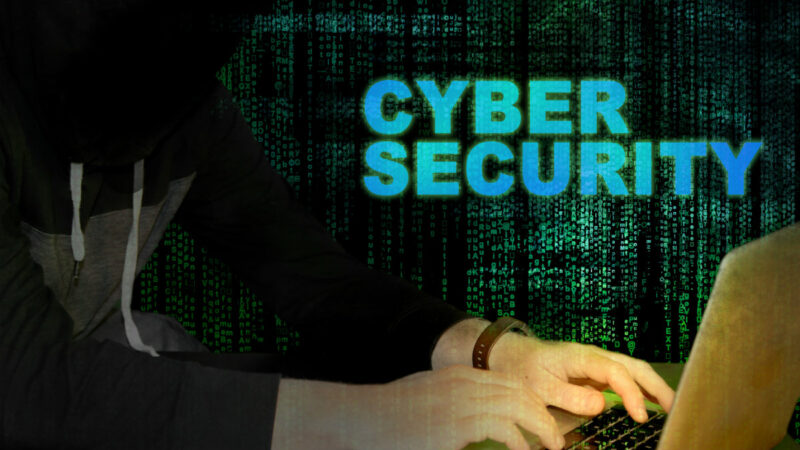We often hear about cyber attacks on large companies, but small businesses are also at risk.
According to recent government data, 38% of small businesses experienced a cyber breach or attack last year, with an average cost of over £8,000 per attack.
Small businesses can be easier targets than larger corporations for several reasons.
Key Takeaways
- Many small businesses lack specialized security and legal knowledge.
- Smaller operations often have fewer established processes and controls.
- Employees working remotely may use insecure Wi-Fi, increasing vulnerability.
- Hackers can use small businesses as a ‘back door’ to access larger clients.
- Websites, emails, and payment systems are often less secure.
- It’s easy to lose track of data, making it more susceptible to breaches.
Most Common Ways Hackers Exploit Small Business
1. Exploiting Human Error
Human error is the top reason for cyber-attacks and data breaches, responsible for up to 95% of incidents.
Mistakes like sending sensitive info to the wrong email, losing a company phone, or sticking with default passwords can all lead to breaches.
Unfortunately, many small businesses don’t have the right controls, training, or communication in place to prevent these errors, which hackers are quick to exploit.
2. Denial of Service (DDoS) Attacks
A DDoS attack aims to make a network, service, or machine inaccessible by overwhelming it with traffic.
These attacks are becoming more common, with DDoS-for-hire services making it easier and cheaper for cybercriminals to disrupt businesses.
By flooding a company’s servers with requests, these attacks can cause shutdowns lasting from minutes to days, leading to significant business disruptions.
Small businesses are particularly vulnerable due to often weaker website architectures.
Additionally, the rise of the Internet of Things (IoT) means many startups and small businesses are integrating new technologies like video conferencing systems, IP security systems, climate control, VoIP phones, and even smart bulbs.
Unfortunately, these devices often lack proper cybersecurity measures, making them easy targets for hackers.
3. Spear Phishing Attacks
Phishing is a common cyber attack where attackers send emails posing as reputable companies, aiming to trick recipients into clicking on malware-laden links or attachments or entering sensitive information.
Spear phishing specifically targets a particular company or individual.
Even with growing awareness of suspicious emails, many phishing attempts are highly convincing, and employees can easily be fooled into thinking an email is from a trusted source.
4. Vulnerable Security Frameworks
Many small businesses don’t invest enough in strong firewalls and security updates, making them vulnerable to attacks that can lead to significant data loss.
Cybersecurity is complex and requires both the right technology and effective policies and processes.
Since small businesses often lack in-house technical expertise, they should consider third-party security providers to implement robust firewalls and regularly update security patches.
However, technology alone isn’t enough.
It’s also crucial to address the human element by conducting thorough risk assessments, establishing a comprehensive cybersecurity policy, and implementing strict access controls.
Best Ways for Small Businesses to Defend Against Cybercriminals
Here are some effective strategies:
Be Aware of Internal Threats
Around 31.5% of cyber-attacks are initiated by company insiders and employees according to komando. Strengthening internal protocols, increasing authorization requirements, and monitoring employees with access to secure data can prevent potential leaks and hacks.
Invest in Secure Communication
Faxing remains one of the most secure communication methods in the business world. For mobile devices, impose restrictions on what information they can access and establish clear protocols for when and how IT can wipe devices clean.
Designate a Cybersecurity Point Person
Assign someone trustworthy to focus on security, even if they have other responsibilities. This person should find the right services or professionals to implement necessary updates and upgrades.
Train Employees Properly
Provide ongoing training on security practices and limit access to sensitive data to only those who need it. Educate employees on identifying phishing scams and other malicious content disguised as legitimate emails.
Install and Update Anti-Virus Software
Regularly update security software and install a proper firewall. Ensure files are scanned before downloading to prevent identity theft and other cyber attacks.
Keep Critical Data Backed Up
Regularly back up all data to protect against ransomware and other attacks. Use multiple locations, including cloud servers, to ensure data access even if it’s compromised.
I’m Tanner Murphy, a retired real estate agent from California, now writing for propertyescape.net. I simplify California’s complex real estate laws for readers, making it easier to understand and navigate the market.







